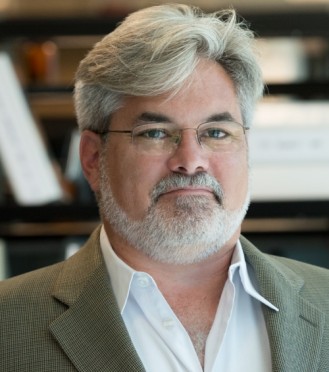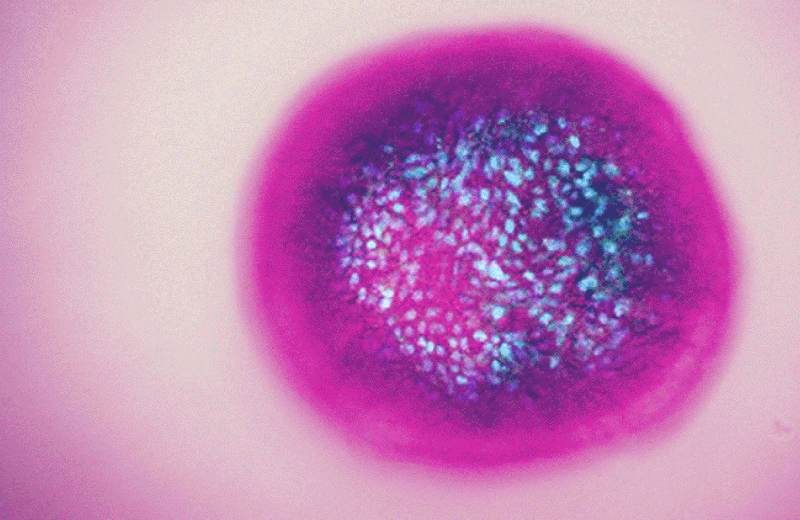Gladstone NOW: The Campaign Join Us on the Journey✕

Steve Finkbeiner, MD, PhD, senior investigator and director of the Taube-Koret Center for Neurodegenerative Disease Research at Gladstone Institutes, is part of this Huntington's disease research program. [Photo: Chris Goodfellow, Gladstone Institutes]
Taube Philanthropies announced it will donate $3 million to support a collaboration between Stanford University School of Medicine and the Gladstone Institutes focused on research related to Huntington’s disease.
The donation will support an innovative program with three leading medical research groups and, for the first time, will introduce gene editing and stem cell therapies to effect treatments and, eventually, a potential cure for Huntington’s disease. Researchers Matthew Porteus, MD, PhD, associate professor of pediatrics at Stanford School of Medicine; Frank Longo, MD, PhD, professor of neurology at Stanford School of Medicine; and Steve Finkbeiner, MD, PhD, director of the Gladstone Institutes’ Taube-Koret Center for Neurodegenerative Disease Research, will collaborate with clinical efforts at the UCSF Memory and Aging Center, under the direction of Bruce Miller, MD, PhD. Harvey Cohen, MD, PhD, professor of pediatrics at Stanford School of Medicine, organized the team of researchers, and Porteus will lead the collaborative effort.
“Huntington’s disease is a cruel genetic disorder that robs its victims of physical and mental control,” said Tad Taube, founder and chairman of Taube Philanthropies. “The time and research that Stanford, UCSF and Gladstone Institutes have committed to this cause is remarkable. I am proud to play a contributing role in the important research being conducted at these institutions and look forward to results that have the potential to transform the lives of Huntington’s disease patients.”
Huntington’s disease is a genetic neurodegenerative disease that causes the progressive breakdown of nerve cells in the brain. It deteriorates a person’s physical and mental abilities, eventually leading to premature death. There is no cure or approved drugs to slow the progression of the disorder. Huntington’s disease belongs to a family of neurodegenerative diseases that includes Alzheimer’s, Parkinson’s and ALS. Today, there are approximately 30,000 symptomatic Americans and more than 200,000 at-risk of inheriting the disease.
“We have made considerable progress in advancing drug therapy developments for patients with neurodegenerative diseases since Taube Philanthropies started supporting my research, nearly a decade ago,” said Finkbeiner. “With this renewed commitment and concerted approach focusing on Huntington’s disease, I am optimistic that we will continue advancing toward our research goals.”
The $3 million donation is a continuation of Taube Philanthropies’ dedication to finding treatments and cures for neurodegenerative diseases. Over the last 12 years, the organization has donated over $5 million to Gladstone Institutes and $1 million to the Stanford University School of Medicine for related research. Taube Philanthropies started funding Huntington’s disease research under the direction of Nobel laureate Dr. Stanley Prusiner at UCSF’s department of neurology.
“We have been working to develop similar therapies for neurodegenerative diseases for many years with some promising results,” said Porteus. “Employing the latest technology, including CRISPR/Cas9 – a powerful new tool that enables scientists to make precise genome edits – I believe we have the opportunity to make great strides toward developing a therapy specifically for Huntington’s disease.”
The gift will be distributed to the researchers in annual increments through 2021 to account for the long-term process of translating scientific insights into clinical trials and applications. The collaborative research project will execute a multi-year program to develop genetic therapy for the disease. Stanford is engaged in cutting-edge stem cell research and hopes to begin conducting clinical trials with Huntington’s patients soon.
“Having studied Alzheimer’s for many years, I am all too familiar with the devastating effects of neurodegenerative diseases,” said Longo. “As researchers with different area specialties convene for this unique joint project, I am optimistic about our capacity to come even closer to finding treatments and cures for these degenerative conditions.”
Until recently, there was a lack of substantive funding for meaningful research into Huntington’s disease. Due to the progress made in the fields of these renowned researchers, significant new federal funding has become available and major pharmaceutical companies have started funding research to develop possible medications. However, collaborative efforts still rely on contributions from generous individuals and private foundations.
Source: Taube Philanthropies
Want to Join the Team?
Our people are our most important asset. We offer a wide array of career opportunities both in our administrative offices and in our labs.
Explore CareersMeet Gladstone: Julia Kaye
Meet Gladstone: Julia Kaye
Julia Kaye is a neuroscientist at Gladstone Institutes dedicated to unraveling the mysteries of neurodegenerative diseases. Outside the lab, Kaye enjoys skateboarding, surfing, and exploring nature with her family.
Profile ALS Huntington’s Disease Multiple Sclerosis Neurological Disease KayeConnecting the Dots: From Stem Cells to Human Health
Connecting the Dots: From Stem Cells to Human Health
Since Shinya Yamanaka discovered a method to create human induced pluripotent stem (iPS) cells, Gladstone researchers have built on this technology to create numerous iPS cell lines, coax iPS cells into a myriad of tissue types, use them as a tool to study disease, and even begin creating therapies using these cells.
Research (Publication) Stem Cell Core Alzheimer’s Disease Huntington’s Disease Finkbeiner Lab Huang Lab McDevitt Lab Srivastava Lab Yamanaka Lab CRISPR/Gene EditingDisease Models Facilitate Breakthrough Science
Disease Models Facilitate Breakthrough Science
Scientists have developed sophisticated models to unravel complex human biology in their pursuit of cures.
Finkbeiner Lab McDevitt Lab Ott Lab Sanjabi Lab Zika Virus Hepatitis C Huntington’s Disease




